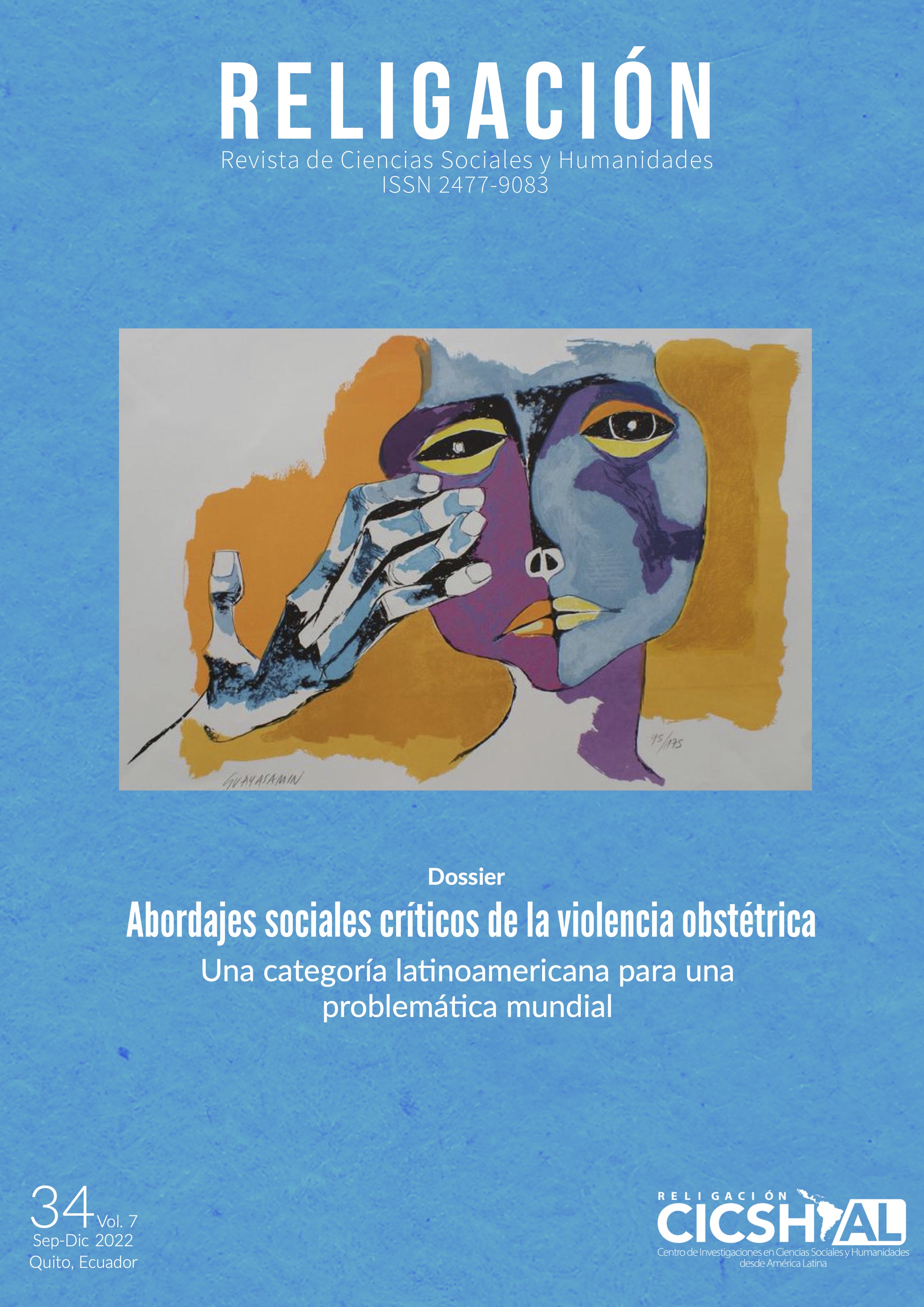La incorrecta adecuación típica de la muerte de una mujer como delito de femicidio en Ecuador
Resumen
En el presente trabajo se analizó el tipo penal de femicidio, incorporado en el Código Orgánico Integral Penal (COIP) desde el año 2014, así como sus elementos constitutivos, específicamente, se analizó la tipicidad como elemento esencial para que exista el cometimiento de un delito. Asimismo, en este trabajo se determinó que existen errores que engloban al tipo penal ya mencionado, en cuanto existe una gran dificultad probatoria al momento de tener una certeza plena sobre si el quitar la vida a una mujer se da por su condición de género. De esta manera, se utilizó un enfoque metodológico de tipo cualitativo, englobando un análisis doctrinario y jurisprudencial sobre las dificultades probatorias y típicas del delito mencionado líneas arriba. Respecto de los métodos utilizados en el presente trabajo, se destacaron el método histórico-lógico, con el cual se analizó el origen y evolución de este tipo penal. El método comparativo, con el cual se observó la realidad jurídica de otros países en torno a este tópico, y finalmente el método dogmático, con el cual se realizó una debida fundamentación teórica respecto del delito de femicidio. Concluyendo así, que el delito de femicidio tiene errores a nivel de la tipicidad, los cuales han creado inseguridad jurídica, respecto de la configuración –o no- del delito, quitando la certeza necesaria que se requiere para la aplicación del ius puniendi.
Descargas
##plugins.generic.paperbuzz.metrics##
Citas
Bacigalupo, E. (1996). Manual de Derecho Penal. Temis S.A.
Carcedo, A. (2011). Femicidio en Ecuador. Repositorio IAEN.
Código Orgánico Integral Penal [COIP]. (2014). Registro Oficial Suplemento No. 180 (Ecuador). https://cutt.ly/zBHMXOW
Código Penal Colombiano [CPC]. (2000). Diario Oficial No. 44097. Ley 599 de 2000 (Colombia). https://www.oas.org/dil/esp/codigo_penal_colombia.pdf
Código Penal de la Nación Argentina [CPNA]. (1984). Ley 11.179 (T.O. 1984 actualizado) (Argentina). https://www.oas.org/dil/esp/codigo_penal_de_la_republica_argentina.pdf
De la Fuente, F. (1995). Relaciones Entre Desvalor de Acción y Desvalor de Resultado en la Fundamentación de la Responsabilidad Penal. Revista de Derecho de la Universidad Católica de Valparaíso, (16). http://www.rdpucv.cl/index.php/rderecho/article/viewFile/306/282
Jiménez Rodríguez, N. (2011). Femicidio/Feminicidio: Una Salida Emergente de las Mujeres Frente a la Violencia Ejercida en Contra de Ellas. Revista Logos, Ciencia & Tecnología, 3(1), 127-148. http://www.redalyc.org/articulo.oa?id=517751801011
Lagarde y de los Ríos, M. (1992). El femicidio, delito contra la humanidad. En Feminicidio, justicia y derecho (pp. 151-164). Comisión Especial Para Conocer y dar Seguimiento a la Investigaciones Relacionadas con los Feminicidios en la República Mexicana, y a la Procuración de Justicia Vinculada. https://cutt.ly/rBH8UCV
Laporta Hernández, E. (2012). El feminicidio/femicidio: Reflexiones desde el feminismo jurídico [Tesis de maestría, Universidad Carlos III de Madrid]. Repositorio https://cutt.ly/3BH4jsI
Ley No. 20.480. (2010). Modifica el código penal y la ley Nº 20.066 sobre violencia intrafamiliar, estableciendo el "femicidio", aumentando las penas aplicables a este delito y reforma las normas sobre parricidio (Chile). https://cutt.ly/8BH4X4C
Ley No. 26485. (2009). Ley de protección integral a las mujeres. Ley para prevenir, sancionar y erradicar la violencia (Argentina). https://cutt.ly/kBH7ym4
Ley No. 30068. (2013). Ley núm. 30068 que modifica el Código Penal y el Código de Ejecución Penal con la finalidad de prevenir, sancionar y erradicar el feminicidio (Perú). https://cutt.ly/tBH6hnN
Mir Puig, S. (2006). Derecho Penal. Parte General (Vol. 8). Editorial Reppertor.
Oficina del Alto Comisionado de las Naciones Unidas para los Refugiados. (1995). Declaración y Plataforma de Acción de Beijing. https://www.acnur.org/fileadmin/Documentos/Publicaciones/2015/9853.pdf
Organización de las Naciones Unidas. (2012). Modelo de protocolo latinoamericano de investigación de las muertes violentas de mujeres por razones de género (femicidio/feminicidio). https://cutt.ly/IBJqtzJ
Organización de Estados Americanos. (1994). Convención Interamericana para Prevenir, Sancionar y Erradicar la Violencia contra la Mujer “Convención de Belém do Pará”. https://www.oas.org/juridico/spanish/tratados/a-61.html
Parra Lara, F. (2017). Feminicidio: ¿Se robustece su inconstitucionalidad en Yucatán? Revistas Jurídicas UNAM, 40. https://cutt.ly/4BJwtTx
Pontón Cevallos, J. (2009). Femicidio en el Ecuador: realidad latente e ignorada. FLACSO.
Ramírez, A. (2017). La aplicación de los principios de legalidad y lesividad en los delitos de sabotaje y terrorismo en un estado constitucional de derechos y justicia: análisis de casos [Tesis de maestría, Universidad Andina Simón Bolívar]. Repositorio Institucional https://repositorio.uasb.edu.ec/handle/10644/5727
Resta, D. (2018). El principio "nullum crimen, nulla poena sine lege" en el derecho penal internacional. En particular en el estatuto de la corte penal internacional [Tesis de doctorado, Universidad de Granada]. https://dialnet.unirioja.es/servlet/tesis?codigo=150995
Roxin, C. (1997). Derecho Penal. Parte General. Tomo I. Fundamentos. La estructura de la Teoría del Delito. CIVITAS.
Santillán, A. (2009). Visualizar, prevenir y sancionar el femicidio. FLACSO.
Tribunal de Garantías Penales del Cantón Riobamba. (2015, 15 de diciembre). Proceso Penal No. 0633-2015-00277 (Ecuador).
Tribunal Noveno de Garantías Penales de Pichincha. (2015, 18 de diciembre). Proceso Penal No. 17282-2015-03493 (Ecuador).
Unidad Judicial Penal de Chone. (2015, 8 de junio). Proceso Penal No. 13151-2015-00158 (Ecuador).
Vega, H. (2016). El análisis gramatical del tipo penal. Justicia, 29, 53-71. http:// dx.doi.org/10.17081/just.21.29.1233
Villanueva Flores, R. (2011). Tipificar al Femicidio: ¿La Huída Simplista al Derecho Penal? CLADEM.
Derechos de autor 2022 Patricio Femando Sarabia Castro, María Susana Ciruzi

Esta obra está bajo licencia internacional Creative Commons Reconocimiento-NoComercial-SinObrasDerivadas 4.0.











